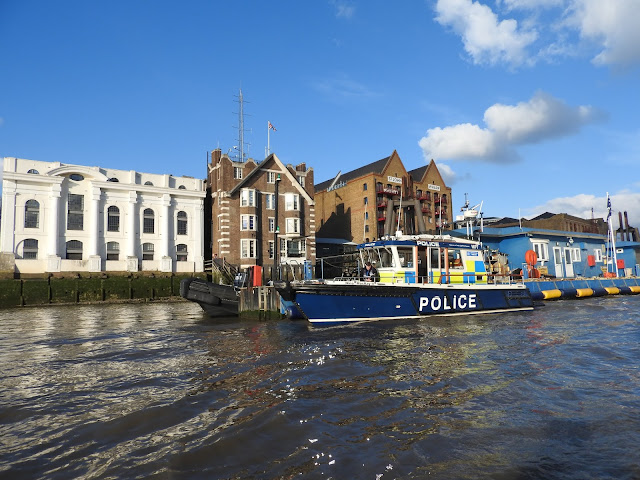It was kept going and, since then, the voyages have been mainly linked to raising money for CASPA, a charity in South East London that helps support children, young people and families affected by autism.
How can the work of the charity be explained? I cannot do better than refer to this video, which explains it all.
From the CASPA website: https://caspabromley.org.uk/
As indicated in a previous post, the running group 'Fourdaysrunning' that does charity fundraising for CASPA, has decided this year to run along the South Downs Way for 100 Kilometres. Starting at Arundel, they will run through south Sussex.
PicoMicroYacht will join them after exploring London's Lost Route to the Sea, rowing along the Sussex coast to their finishing point, Eastbourne.
The Lost Route to the Sea encompasses the countryside between London and Sussex, with the Wey and Arun Canal the focal point. Various people have written about their experiences voyaging this canal.
This includes a charming waterways travelogue by J.B. Dashwood, written in the Victorian era. Dashwood reduced the mast of his cat rigged sailing boat, Caprice, and had it towed by a horse up the river Wey and then down through the Wey and Arun canal, using the river Arun to reach Littlehampton.
Dashwood's book: Note the difficulty with his horse who was refusing to go through a towpath gate
His aim had been to get to Portsmouth. However, because the canal link via Chichester had long since disappeared, he eventually daringly ventured out into the English Channel and sailed westward round Selsey Bill into the Solent. Despite rough seas and having to bail his boat out, he arrived in Portsmouth safely.
His book was published in 1868 and shortly after a closure order for the Wey and Arun canal was made. Although the canal had become nonviable for commerce, many regretted the canal's closure, including the writer P. A. L. Vine, who was inspired to write the book, London's Lost Route to the Sea, published in 1965.
This book drew on the sentiments of a poem by Rudyard Kipling called 'The Way Through the Woods.' Vine has reflected on the manner in which the canal wound through the gently wooded landscape of the Surrey and Sussex border and quoted from Kipling as follows:
They shut the road through the woods
seventy years ago.
Weather and rain have undone it again,
and now you would never know
There was once a road through the woods.
(the Way Through the Woods, Rudyard Kipling, published 1899)
Over the years, following the writings of Vine, a sense of saudade about the canal has mobilised people to form the Wey and Arun Canal Trust, with over 3,000 members and volunteers restoring it in sections.
PicoMicroyacht will traverse the length of the canal, rowing where it has been restored and running along the Wey South path when it is not possible to row.
The Way Through the Woods - Pet Shop Boys version
They shut the road through the woods
Seventy years ago.
Weather and rain have undone it again,
And now you would never know
There was once a road through the woods
Before they planted the trees.
It is underneath the coppice and heath,
And the thin anemones.
Only the keeper sees
That, where the ring dove broods,
And the badgers roll at ease,
There was once a road through the woods.
Seventy years ago.
Weather and rain have undone it again,
And now you would never know
There was once a road through the woods
Before they planted the trees.
It is underneath the coppice and heath,
And the thin anemones.
Only the keeper sees
That, where the ring dove broods,
And the badgers roll at ease,
There was once a road through the woods.
Yet, if you enter the woods
Of a summer evening late,
When the night-air cools on the trout-ringed pools
Where the otter whistles his mate,
(They fear not men in the woods,
Because they see so few)
You will hear the beat of a horse’s feet
And the swish of a skirt in the dew,
Steadily cantering through
The misty solitudes,
As though they perfectly knew
The old lost road through the woods.
But there is no road through the woods.
Words: Rudyard Kipling
Music: Tennant / Lowe
Music: Tennant / Lowe

































